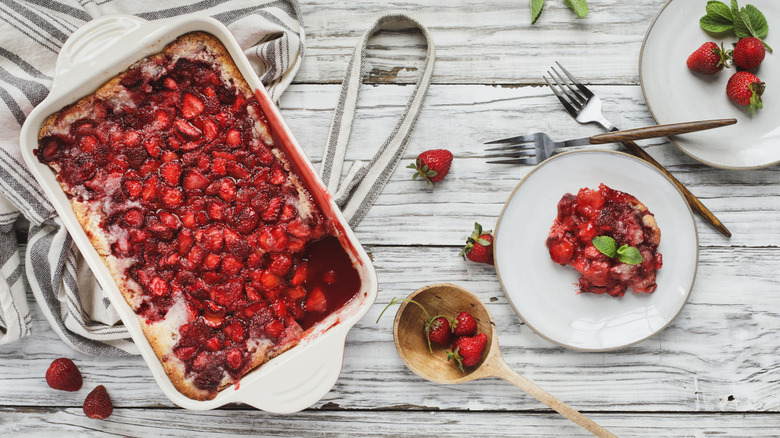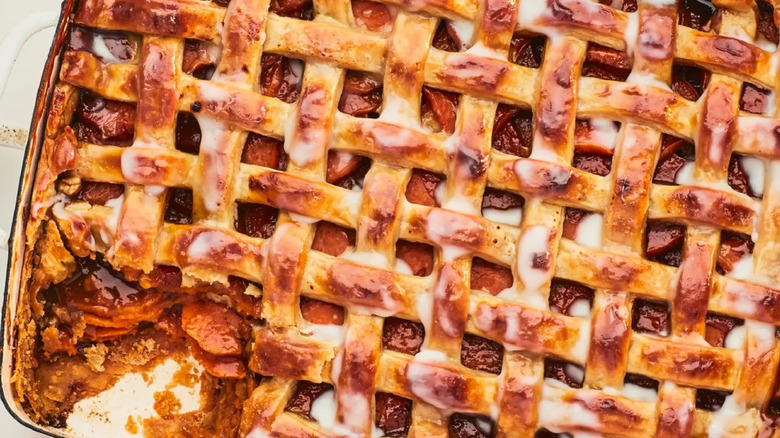North Carolina's Sonker Dessert Looks Like Cobbler, But It's Different
When is a cobbler not a cobbler? When it's a Surry County sonker! It's believed that the juicy deep-dish dessert was created in Surry County, North Carolina during the 19th century and perhaps originated with Scottish immigrants to the region. It was a budget-friendly method of using up fruit (and sometimes vegetables) and was meant to feed a large family or hungry farmworkers.
Typically baked in a bread loaf pan, the dish can be made with any available fruit, as well as sweet potatoes or rhubarb (that last isn't a bad addition to your daily vegetable smoothie, by the way). It's topped with either a dough crust or biscuits, though just about every local family has their own recipe with a unique or secret ingredient. Regardless of the ingredients, sonker is served with what's termed a dip — essentially a sauce made from sugar and milk along with cinnamon or other spices.
So, how does that make a sonker different than a cobbler? Cobblers generally require sugar, lemon juice, and biscuits made with flour, butter, more sugar, salt, and baking powder. A sonker only really needs fruit (heck, even canned fruit might do), a thickener (either arrowroot powder or cornstarch is typical), and sometimes an extra egg to make the dough topping. The end result is a much more soupy dessert than a cobbler, but also a much cheaper one.
How did the dessert get its name?
Some say the unique dessert got its name because the fruit would sink beneath the dough topping. Supposedly, sonker is a derivative of the word sinker created by regional accents. Those who believe that Scottish immigrants are responsible for the regional dessert surmise that the word "sonker" is Scottish for "a little of this or that." Some people have suggested that "sonker" refers to a saddle. This suggestion might have generated because the dough looks like a saddle over the baked fruit.
Regardless of its origin, sonker is a dish with countless recipes that have been passed down from one generation to another. Just like the family spin on the sonker recipe, the dip has its own variations. No matter how you make it, the basics require boiled half and half or milk and adding a thickener to it. The dip makes the sonker even juicier!

